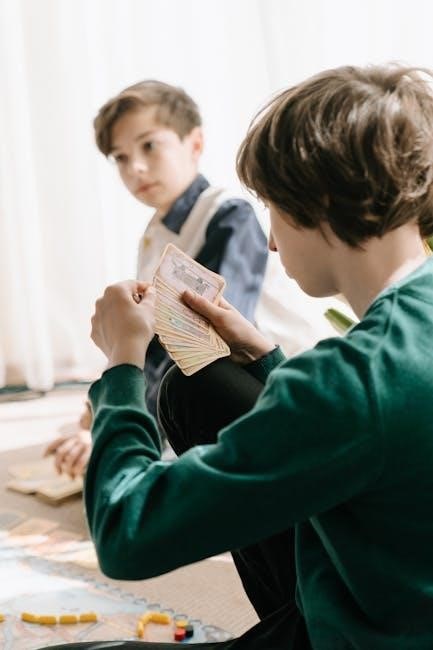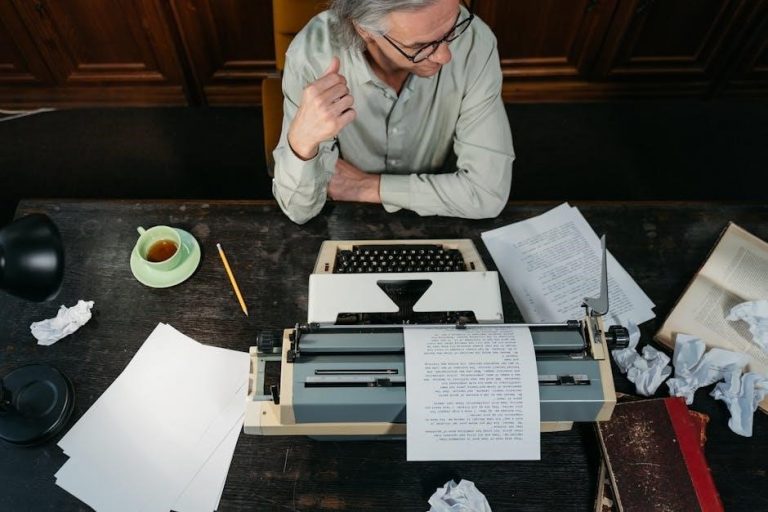Historical thinking skills empower students to analyze and interpret the past critically. These skills include sourcing, contextualizing, and close reading, enabling learners to engage deeply with historical narratives. Activities like primary source analysis and causation exercises foster creativity and understanding of historical processes.
Importance of Historical Thinking Skills
Historical thinking skills are essential for fostering critical thinking, empathy, and problem-solving abilities. They enable students to understand the complexities of the past, making connections to the present and future. By developing these skills, learners gain a deeper appreciation for diverse perspectives and the ability to analyze evidence. Historical thinking also cultivates informed citizenship, as students learn to evaluate historical narratives and their relevance to contemporary issues. These skills are not only vital for academic success but also for navigating real-world challenges; They promote interdisciplinary learning, enhancing creativity and analytical reasoning. Through activities like primary source analysis and case studies, students develop a stronger grasp of causation and historical reasoning. Ultimately, historical thinking skills empower individuals to engage meaningfully with the world around them, fostering a lifelong understanding of history’s significance.
Key Skills in Historical Thinking
Key historical thinking skills include critical analysis, evidence evaluation, and chronological reasoning. These skills help students interpret historical events, understand perspectives, and draw meaningful conclusions. They form the foundation for engaging with the past effectively.

3.1 Historical Reasoning
Historical reasoning involves the ability to analyze historical events by evaluating evidence, identifying patterns, and understanding relationships between causes and effects. This skill encourages students to think critically about the past, considering multiple perspectives and contexts. By engaging in historical reasoning, learners develop a deeper understanding of historical narratives and their significance. This process also helps students to question assumptions and challenge prevailing interpretations, fostering a more nuanced grasp of history. Activities such as analyzing primary sources and constructing timelines can enhance historical reasoning. Moreover, it prepares students to approach complex historical questions with clarity and precision, making it a cornerstone of historical thinking skills.
3.2 Causation
Causation is a fundamental aspect of historical thinking, focusing on understanding the relationships between events and their causes and effects. Historians use causation to explain why events occur, identifying both immediate and long-term factors. This skill helps students move beyond mere description to deeper analysis, exploring how historical actions and decisions shape outcomes. By examining causation, learners develop the ability to evaluate evidence, weigh the importance of different factors, and construct logical arguments. For instance, analyzing the causes of a major historical event, such as a war or social movement, requires considering political, economic, and social contexts. Causation also encourages students to think critically about the complexity of historical events, recognizing that outcomes are rarely the result of a single cause. This process fosters a more nuanced understanding of history and prepares students to evaluate the interconnectedness of events in various contexts.

Activities to Develop Historical Thinking Skills
Engaging activities like analyzing primary sources, conducting case studies, and creating timelines help students develop historical thinking skills. These exercises encourage critical thinking, evidence-based reasoning, and the ability to contextualize historical events effectively.

4.1 Using Primary Sources
Primary sources are essential tools for developing historical thinking skills, offering firsthand perspectives on past events. By analyzing documents, images, and artifacts, students learn to source, contextualize, and interpret evidence. This process enhances critical thinking and understanding of historical narratives, fostering deeper engagement with the past.

4.2 Case Studies
Case studies are a powerful tool for fostering historical thinking skills, as they allow students to delve deeply into specific historical events or issues. By examining a particular case, students can practice critical thinking, analysis, and the ability to draw connections between different historical elements. Case studies often involve primary sources, encouraging students to engage with original materials and develop a nuanced understanding of historical context. This approach also helps students to identify patterns, causes, and effects, which are essential components of historical reasoning. Additionally, case studies can be tailored to address a wide range of topics, making them adaptable to various educational settings. Through this method, students not only gain a deeper understanding of the past but also develop the ability to apply historical insights to contemporary issues. Overall, case studies are an effective way to enhance historical thinking skills by providing a structured and engaging learning experience.

Assessment and Feedback in Historical Thinking
Assessment and feedback are crucial for developing historical thinking skills. Formative assessments, such as analyzing primary sources and causation, provide insights into student understanding, enabling timely feedback. This process helps refine critical thinking and application of historical concepts effectively.
5.1 Formative Assessments
Formative assessments play a vital role in monitoring student progress in historical thinking. These evaluations are ongoing and provide immediate feedback, allowing teachers to identify strengths and areas needing improvement. Activities such as primary source analysis, causation exercises, and class discussions are commonly used. By engaging students in these practices, educators can gauge their ability to contextualize, source, and interpret historical information. Regular feedback helps students refine their critical thinking skills and deepen their understanding of historical narratives. Additionally, formative assessments enable teachers to adjust their instruction, ensuring that all learners are supported in developing their historical reasoning abilities. This approach fosters a more interactive and inclusive learning environment, where students can explore historical concepts with clarity and confidence. Ultimately, formative assessments are essential for nurturing the development of historical thinking skills in an effective and meaningful way.
Historical thinking skills are essential for fostering critical analysis and real-world application of the past. Future directions include integrating technology and interdisciplinary approaches to enhance learning experiences, ensuring students develop a deeper understanding of historical contexts and their relevance to contemporary issues.
6.1 Future Directions in Historical Education
Future directions in historical education emphasize integrating technology and innovative teaching methods to enhance engagement. Multimedia tools, such as virtual reality and interactive timelines, can immerse students in historical contexts, fostering deeper understanding. Additionally, there is a growing focus on inclusivity, ensuring that diverse student populations, including visually impaired learners, have access to tailored activities that cater to their needs. The development of interdisciplinary approaches, blending history with other subjects like literature and science, can provide a more holistic learning experience. Furthermore, the use of primary sources and formative assessments will continue to play a crucial role in refining historical thinking skills. By embracing these advancements, educators can create a more dynamic and accessible learning environment that prepares students to critically analyze and apply historical knowledge to contemporary challenges.

References and Further Reading
For further exploration of historical thinking skills, several resources provide in-depth insights and practical applications. The AP U.S. History Curriculum Framework offers detailed guidance on developing historical reasoning and causation skills. Additionally, the Collectively American program materials highlight innovative approaches to teaching historical thinking through themes of identity. The Reasoning through Language Arts curriculum provides complementary strategies for enhancing comprehension and critical thinking. For educators, the Discipline Structure of History in Malaysia PDF outlines key concepts such as historical inquiry and contextualization. Furthermore, the Back to History Activity Bundle includes engaging exercises for introducing historical thinking skills. Online resources like the National Council for the Social Studies and Historical Thinking Matters offer additional lesson plans and assessments. These resources collectively provide a comprehensive foundation for understanding and implementing historical thinking skills in educational settings.
